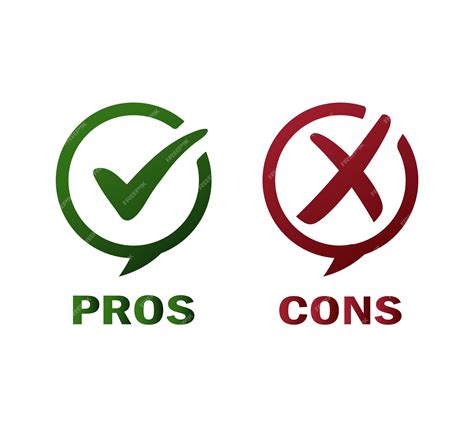Unlocking the Magic of Reading Comprehension for 3rd Graders: A Comprehensive Guide for Parents and Educators
Introduction
Reading comprehension is a crucial skill that empowers children to unlock the world of knowledge, expand their imaginations, and succeed in academic pursuits. For third graders, fostering comprehension skills is paramount to their overall reading development and future literacy success. This article provides a comprehensive guide, breaking down the complexities of reading comprehension for 3rd grade students, offering practical strategies, and addressing common pitfalls to ensure a rich and rewarding reading journey.
Understanding Reading Comprehension for 3rd Graders
Reading comprehension involves understanding the meaning of written text. For 3rd graders, this entails the ability to:
- Identify the main idea of a passage
- Retell key events and details in sequence
- Make inferences and draw conclusions
- Predict outcomes based on provided information
- Summarize key points and express their understanding
Essential Strategies for Enhancing Comprehension
1. Building Background Knowledge
Activating prior knowledge is crucial for comprehension. Engage students with discussions, videos, or real-life experiences related to the text topic before reading.
2. Previewing the Text
A sneak peek into the text helps students build context. Guide them to examine headings, visuals, and introductory paragraphs to create a mental map of the passage.

3. Close Reading
Encourage students to reread passages multiple times, focusing on key words and phrases. Use highlighters or sticky notes to mark important details and make connections.
4. Questioning Techniques
Thoughtful questioning fosters critical thinking. Pose questions that require students to recall facts, infer meaning, and predict outcomes. Encourage students to ask their own questions as well.

5. Visualization and Imagery
Help students create mental images and connections by asking them to draw, act out, or describe events in the text. This enhances understanding and retention.

Common Pitfalls to Avoid
1. Overreliance on Decoding
While decoding is essential, it's not enough. Encourage students to focus on understanding meaning rather than just reading words correctly.
2. Lack of Textual Evidence
Ensure that students support their answers with evidence from the text. Guide them to identify specific details and explain how they connect to their responses.
3. Superficial Reading
Prevent students from skimming or passively reading. Engage them in active reading strategies to foster deep comprehension.
Step-by-Step Approach for Teaching Reading Comprehension
- Read the text aloud to students, modeling fluent reading and pausing to discuss key points.
- Have students retell the story in their own words to ensure understanding.
- Guide students to identify the main idea and supporting details.
- Use open-ended questions to encourage critical thinking and inferences.
- Summarize the text together, reiterating key points and connections.
Potential Disadvantages to Consider
- Time-consuming process: Comprehension-focused instruction may require additional time compared to traditional reading instruction.
- Individualized needs: Students' comprehension abilities vary, requiring individualized instruction and support.
Pros and Cons of Focused Comprehension Instruction
| Pros |
Cons |
| Enhanced understanding and retention |
Time-consuming |
| Improved critical thinking and problem-solving skills |
May require additional resources and training |
| Increased motivation and engagement in reading |
Can be challenging to implement in large class sizes |
Frequently Asked Questions
-
Q: What resources are available for supporting comprehension instruction?
-
A: Visit the International Literacy Association website for helpful resources: https://literacyworldwide.org/resources-for-teachers/what-is-reading-comprehension
-
Q: How can I assess my students' comprehension effectively?
-
A: Use a variety of assessment methods, such as quizzes, comprehension logs, and oral responses.

-
Q: What are some fun ways to enhance comprehension?
-
A: Try using graphic organizers, playing comprehension games, or creating readers' theater performances.
Humorous Stories and Lessons Learned
Story 1: The Boy Who Read Too Fast
A boy named Timmy always rushed through his reading, eager to finish as quickly as possible. As a result, he often stumbled over words, skipped important details, and struggled to remember what he had read. One day, his teacher asked Timmy to read a passage about a journey to the moon. Timmy sped through the text, but when his teacher asked him to describe the astronaut's suit, he couldn't remember a single detail.
Lesson: It's important to slow down and read carefully to ensure comprehension.
Story 2: The Girl Who Asked Too Many Questions
There was a girl named Lily who loved to ask questions. While her curiosity was commendable, her constant interruptions during class reading time made it difficult for her classmates to concentrate. One day, Lily's teacher asked her to keep her questions until the end of the passage. Lily listened intently and asked thoughtful questions once the reading was complete. Her classmates were able to follow the story more easily and even asked some questions of their own.
Lesson: While asking questions is important, it's crucial to choose appropriate times to avoid disrupting the reading flow.
Story 3: The Dog Who Ate the Homework
One afternoon, Max's dog, Buddy, decided to have a snack. Unfortunately, Buddy's snack turned out to be Max's reading comprehension worksheet. As Max frantically searched for his worksheet, his teacher couldn't help but chuckle. Max learned a valuable lesson that day: it's best to keep important documents out of reach of hungry pets!
Lesson: Unexpected interruptions can occur during reading, so it's wise to take precautions to prevent loss or damage to reading materials.
Conclusion
Reading comprehension is a vital skill that unlocks a world of knowledge for third graders. By embracing research-based strategies and addressing common challenges, educators and parents can nurture students' understanding and empower them to become confident and enthusiastic readers. Remember, the journey of reading comprehension is ongoing, requiring patience, support, and a love for the written word.
